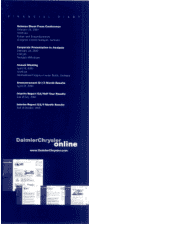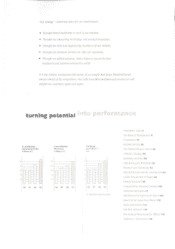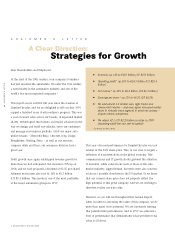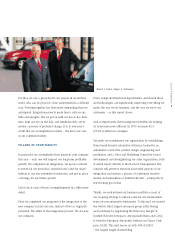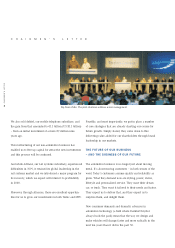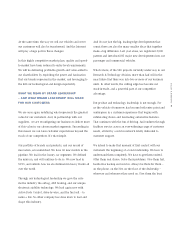Mercedes 1999 Annual Report Download - page 16
Download and view the complete annual report
Please find page 16 of the 1999 Mercedes annual report below. You can navigate through the pages in the report by either clicking on the pages listed below, or by using the keyword search tool below to find specific information within the annual report.
FRONTRUNNER
10
Frontrunner
He comes in fast. Dark-haired and compact, with an economy of movement and language
that suggest physical power and an astonishingly quick mind, Dirk Walliser, who drives the
business program of DaimlerChrysler’s development of fuel-cell technology, sits down at a
table in the main cafeteria at the corporation’s Stuttgart headquarters – and reinvents his
world.
How engines will work. Which technology factors will differentiate the way cars perform
and navigate. The way people will move about in the cities of tomorrow. Why the company
he works for, which led the world into the 20th century with the first automobile, is doing it
again in the 21st century – commanding a powerful array of brands, new products, technologi-
cal innovations, and all the knowledge its workers, researchers, engineers and managers are
ceaselessly accumulating and leveraging throughout the Group.
What makes Walliser’s exposition so compelling is that, though a scientist to his fingertips,
he is even more passionate in his conviction that the company’s quest to maintain techno-
logical leadership and define global industry standards should be driven by what these con-
tribute to the profitable growth of the company and the leading position of its brands. By the
time Walliser has finished, the cafeteria is empty again. The breakfast crowd has come, eaten
and gone but Walliser has not noticed.
Since its formation in November 1998, DaimlerChrysler has driven through a
transformation that is turning potential into performance and creating dramatic new
opportunities for growth. Writer Paul Bell, the author of this special chapter, calls
the process ‘a quantum leap into the automotive future’.


